 Technology
Technology  Technology
Technology  Humans
Humans 10 Everyday Human Behaviors That Are Actually Survival Instincts
 Animals
Animals 10 Animals That Humiliated and Harmed Historical Leaders
 History
History 10 Most Influential Protests in Modern History
 Creepy
Creepy 10 More Representations of Death from Myth, Legend, and Folktale
 Technology
Technology 10 Scientific Breakthroughs of 2025 That’ll Change Everything
 Our World
Our World 10 Ways Icelandic Culture Makes Other Countries Look Boring
 Misconceptions
Misconceptions 10 Common Misconceptions About the Victorian Era
 Mysteries
Mysteries 10 Strange Unexplained Mysteries of 2025
 Miscellaneous
Miscellaneous 10 of History’s Most Bell-Ringing Finishing Moves
 Technology
Technology Top 10 Everyday Tech Buzzwords That Hide a Darker Past
 Humans
Humans 10 Everyday Human Behaviors That Are Actually Survival Instincts
 Animals
Animals 10 Animals That Humiliated and Harmed Historical Leaders
Who's Behind Listverse?

Jamie Frater
Head Editor
Jamie founded Listverse due to an insatiable desire to share fascinating, obscure, and bizarre facts. He has been a guest speaker on numerous national radio and television stations and is a five time published author.
More About Us History
History 10 Most Influential Protests in Modern History
 Creepy
Creepy 10 More Representations of Death from Myth, Legend, and Folktale
 Technology
Technology 10 Scientific Breakthroughs of 2025 That’ll Change Everything
 Our World
Our World 10 Ways Icelandic Culture Makes Other Countries Look Boring
 Misconceptions
Misconceptions 10 Common Misconceptions About the Victorian Era
 Mysteries
Mysteries 10 Strange Unexplained Mysteries of 2025
 Miscellaneous
Miscellaneous 10 of History’s Most Bell-Ringing Finishing Moves
10 Shocking Procedures Done To Animals
Although many of the procedures we perform on animals are for their own welfare, other times, we might just cut off a body part because it looks good. (Or we humans like to think so, at least!)
Putting things in animals (or taking them out) can also make the critters more manageable. Or make us a lot of money. But even when a procedure is done for the animal’s own good, our actions are still unbelievable sometimes.
10 Bile Bears
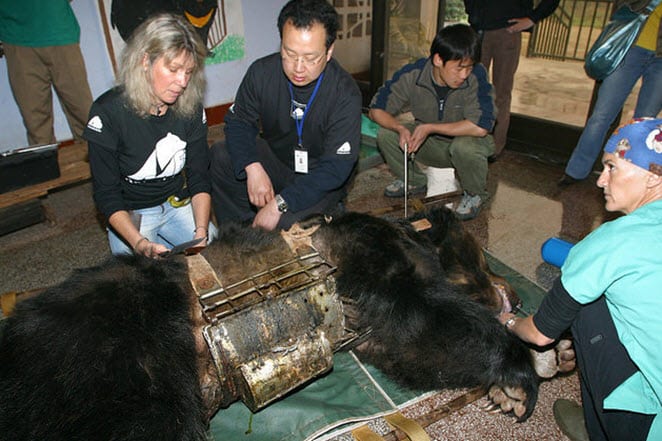
Bear bile has been used in Chinese medicinal remedies for hundreds of years, with believers claiming that it can cure a wide range of ills. (It cannot.) Even for what limited benefits it can have, there are better alternatives.
Nevertheless, bile bear farms are big business in countries that have not outlawed the practice. There are many ways that bile is extracted from a bear’s gallbladder, but none of them are pleasant for the animals.
Some bears undergo regular extractions. This involves immobilizing them, often with physical restraints, and then extracting the bile surgically (although the term “surgically” is being used rather loosely in this case).
Other bile farmers eliminate the need for regular “procedures” by leaving a catheter inserted into the bear’s gallbladder at all times. Some give the bears “torture vests,” as the rescuers of one bear called them, that constantly drain the bile into a box for easy recovery. Other farms do away with the need for restraining the bears by keeping them in “crush cages” where they live their entire lives without the freedom to move.[1]
Bile farming has been banned in some countries, but the practice continues throughout many nations in Southeast Asia. As bears are captured in the wild, poaching and habitat destruction is leading to a population decline of wild bears in the region that experts fear will only get worse.
9 Holey Cows
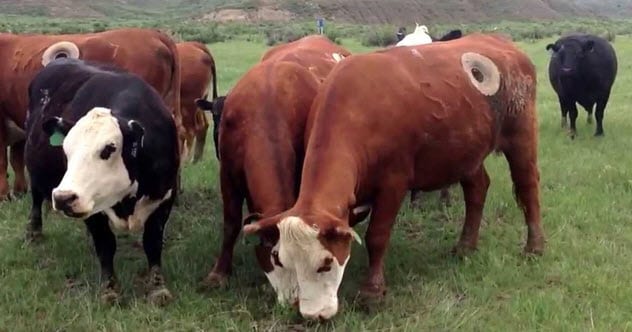
To better understand what is happening in a cow’s digestive tract and increase the health of an entire herd, some researchers and farmers drill holes in their cows’ sides to create permanent portholes to their stomachs. The procedure is done under anesthesia, so it’s said that the cows don’t feel any pain.
A rubber plug is inserted into the hole, which can then be removed to monitor the cow’s digestive system. (It’s large enough to stick a human hand in.) As far as keeping the hole free from infections, agriculturists claim that the cow’s own gut microbes protect it from “bad” bacteria because the “good” bacteria prevent any from taking hold.
Animal rights activists call cannulating cows, which is the term used for this procedure, animal abuse. Agriculturists claim that it is done for the welfare not only of the cannulated cow but of the entire herd. As researchers can observe the cow’s stomach directly and insert or remove matter being digested, they can analyze it to create more nutritious diets for the cow.[2]
Also, the material in its digestive microbiome plays an extremely important part in a cow’s health. When a cow is sick, the digestive system is often the last area to recover. But when farmers give material from a healthy cannulated cow’s gut to a sick cow, it dramatically speeds up the sick cow’s recovery.
8 Ear Cropping
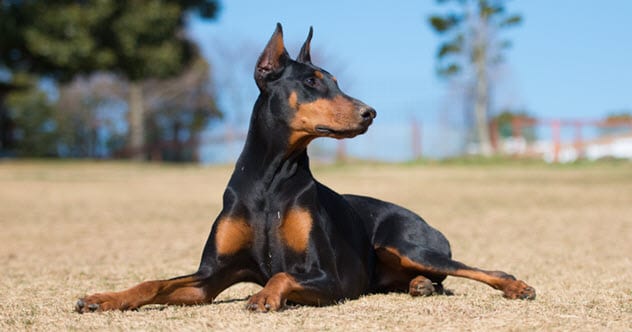
To the surprise of many dog lovers, the upright ears of some breeds, like the Doberman pinscher, are not their ears’ natural shape. These dogs are not born with small, erect ears but receive them from a procedure known as “ear cropping.” It’s performed to make them have a more desirable look—to humans. (The dogs don’t seem to care one way or the other.)
Ear cropping is controversial among veterinarians and animal rights activists because they claim it has no value except cosmetic (again, to humans) and that the animal must endure pain and possible complications from cutting large sections of their ears off.
According to the American Veterinary Medical Association, no medical evidence confirms the claims of adherents who say that dogs benefit from ear cropping because it lessens the likelihood of ear infections. Assertions that the procedure improves hearing or can help the dog avoid future ear injuries are likewise not proven.
In fact, one of the problems with the procedure is that a dog’s ears can get infected as a postoperative complication. The ears must also be taped upright to remain in the desired position, and retaping can cause pain for the dogs. If the ears fail to remain upright, further cropping must be done, increasing the risks of infection and producing more pain for the dog.[3]
7 Cutting Off Sheeps’ Butt Skin

Flystrike is one of the worst things that can happen to a sheep. The animal’s wool is thick all over its body, including the area around its anus, and its feces can start to build up around the area. This attracts flies. It’s such an inviting area to the insects that they can lay their eggs in the skin of the sheep, leading to them being eaten alive by maggots.
A sheep with flystrike can die in just a few days. To prevent this, sheep farmers came up with a procedure known as mulesing (after John Mules who invented it) in which they cut away the skin that grows wool around a sheep’s anus. This keeps the area free from feces and urine buildup.
Activists object to this procedure because the farmers actually cut away the animal’s butt skin, often without anesthetics or any postoperative procedures. Mulesing did not receive much attention until PETA found out about it and began posting videos and images of a sheep getting mulesed.[4]
The sheep itself shows no indication of feeling any pain, But the blood from mulesing and further tests which show the animal’s astronomical increase in stress hormones tell a different tale. (As sheep are prey animals, it’s believed that they do not show pain.) PETA organized a boycott on Australian wool to combat the practice.
6 Tail Docking
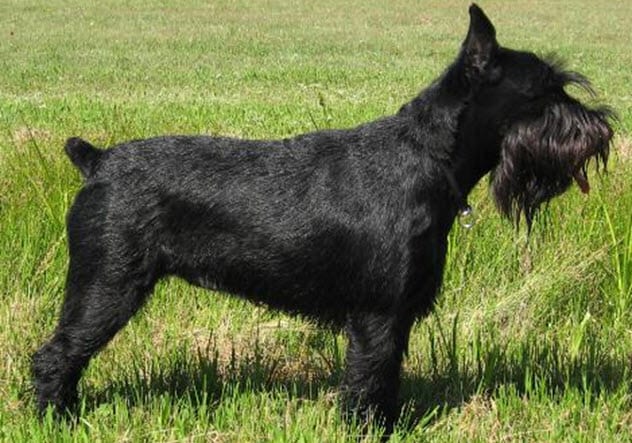
Many breeds of dogs with short tails do not receive them from genetics but from a procedure known as tail docking. Basically, it’s a partial amputation of a tail. As with ear cropping, the main reasons are purely cosmetic, like when a dog’s breed standard has the image of a short, stubby tail.
Tail docking has been shown to have some value in rare cases. In working dogs, such as guard dogs and hunting dogs, tail docking can have some positive effects. It can keep the dog from getting injured when it travels through brush that could harm its tail. A guard dog could likewise avoid getting its tail yanked by an intruder.
However, the American Veterinary Medical Association (AVMA) stresses that tail docking rarely has justifiable benefits even among working dogs. The organization does not support the practice. It is not so much that tail docking is harmful to the animal (aside from the pain of the procedure), but there is usually no benefit for the animal itself. So the AVMA does not believe it is necessary. It is illegal in countries like the UK.[5]
Tail docking is not confined to canines, however. Docking cows’ tails, once routine in the US dairy industry, has likewise shown no benefit to the animal or dairy worker. It only adds to discomfort during fly season as the animals have more flies and a harder time dealing with them because the cows cannot swish their tails to swat the flies.
As a result, US dairy industry manuals discourage it. Young lambs and some horses also have their tails docked to prevent situations like flystrike or getting entangled in equipment. Unlike with other animals, tail docking in these situations has been proven to have some benefit to the lambs and horses.
5 Shoving Ginger Up Horse Butts

Different styles of show horses are held to different standards. In some categories, a “lively” tail is seen as a qualification to compete. The horse is supposed to keep its tail up and at the ready to be considered at the peak of its breed.
However, not all horses are as enthusiastic about keeping their tails up as their owners would like. So, some humans take the situation into their own hands, as it were, by shoving ginger up their animals’ butts.
The ginger acts as an irritant that makes the horse lift its tail. “Gingering” is the term used because the original technique was to pack horse buttholes with raw ginger, but other substances have been administered as well. Cayenne pepper or even kerosene is likewise applied to the horse’s anus and perineal/vaginal region to give the animal’s tail that extra perk.
Naturally, the practice of gingering has been banned at shows. It is harmful to the animal, and it doesn’t give a real representation of the breed. Swabbing for ginger and any other substance that might irritate a horse’s nether regions is a common practice. For testers who don’t want to get up close and personal with horse butts, thermal imaging is another option.
But some horseshow people have opted to cheat not with chemicals but with a practice called “nicking.” This cuts certain ligaments in the horse’s tail and then resets them at a higher position. Anything for a win.[6]
4 Getting High (Steps)
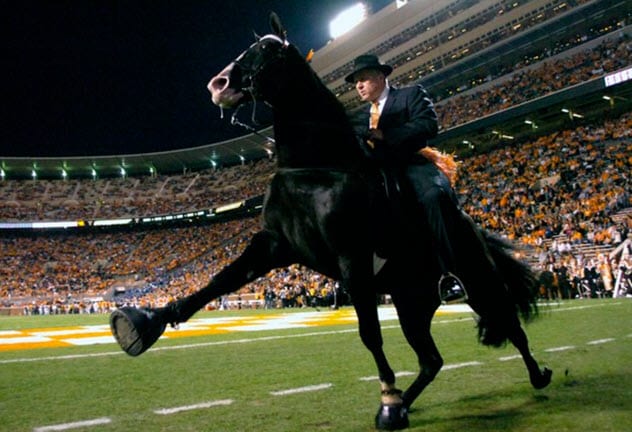
Horses have more to worry about than their owners putting chemicals up their butts. As the Tennessee Walking Horse is known for its leg movements, some unscrupulous breeders in competition have been artificially producing the hallmarks of these horses by searing their legs with chemicals.
“Soring” a horse is harming the animal’s legs, often by putting chemicals on or around a horse’s hooves/leg area to make stepping painful. The irritant is put on the front legs and causes the horse to recoil in pain when it walks. This creates a much higher step that looks pleasing to an audience.
Officials have been critical of Tennessee Walking Horse shows for soring their horses. They clamped down on these practices in accordance with the Horse Protection Act of 1970, but then the officials ran into another issue. After a horse is sored, the practice can be covered up by adding even more chemicals to numb the pain until the horse enters the show.
At the 2013 Tennessee Walking Horse National Celebration, 67 percent of horses tested positive for chemicals that could have covered up evidence of soring. A spokesman for the Performance Show Horse Association said that the findings were incorrect. He added that the information did not come from USDA veterinary inspectors but from other outside organizations.
According to a veterinarian representing the organization, there was no scientific support for the findings and it was unreasonable to think that a horse’s legs wouldn’t have trace amounts of the substances. They say their goal is full compliance and that they don’t want the “Big Lick” competition ruined by cheaters.[7]
3 Nose Rings Hurt (That’s Why They’re There)
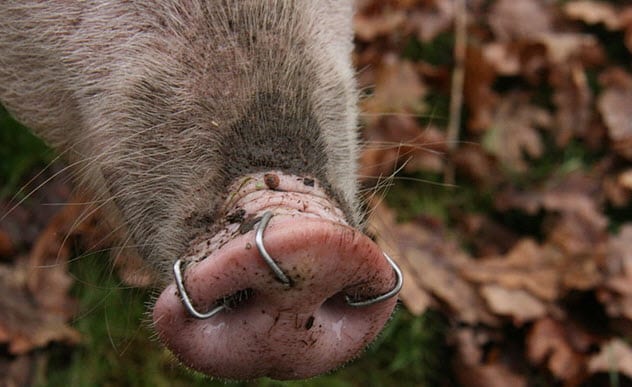
Nose rings are placed in the nostrils of animals for several reasons. But whatever the endgame of the farmer is, nose rings were meant to cause pain. For animals like cows, a nose ring can be used to control an animal that is in close proximity to humans.
The cow can be led around by a rope tethered to the nose ring, or pulling on the ring can cause pain which discontinues the undesirable activity. Temporary nose rings are also placed on calves to wean them. The rings prevent them from nursing but allows them to eat food like adult cows.
Perhaps the most common images of nose rings in animals involve pigs, but they are also the most discouraged. The rings are seen as harmful to the pigs’ welfare. While nose rings can be used to lead a pig somewhere, the main purpose of nose rings in these animals is to stop them from rooting.
A herd of pigs rooting can destroy the plant life around an entire farm. However, many animal researchers believe that rooting is a behavioral need in pigs and to prevent that activity would be harmful to their welfare. Given that, other methods of rooting prevention are recommended. Nose ringing pigs is discouraged or even banned in several countries.[8]
2 Chickens With Rose-Colored Glasses Or Blinders

Many people agree that chicken makes a very tasty meal, but unfortunately, that sentiment is shared by the birds themselves. They are cannibals. Each year, chicken farmers can lose up to 25 percent of their stock to chickens killing each other.
When one chicken draws blood, the sight of the blood draws other chickens to the injured bird. They attack it, too. So when a chicken bleeds, it often dies quickly at the beaks of its flock.
Chicken farmers use a range of methods to avoid losing their stock this way. Interestingly, this includes giving spectacles to their birds. These rose-colored glasses make it difficult for the chickens to see blood, which prevents mobs of them from attacking a lone bird.
Some glasses were designed to swing open when the chicken ate so that it had a normal view of its food. Then the spectacles would swing back down once the chicken lifted its head again.[9]
Other kinds, called blinders, are opaque and prevent the chicken from seeing in front of its head. The chicken can’t see to attack another chicken, so deaths are prevented. There were even attempts to give the chickens permanent red-colored contact lenses. However, these only harmed the chickens and made some go blind.
Although some blinders and spectacles are temporary clip-ons, others are permanent. These are pinned directly into the nasal cavities of the birds and are listed as “mutilations” by the UK government. The practice is illegal there because it is deemed detrimental to the welfare of the birds.
1 Cutting Off The Eyes Of Prawns
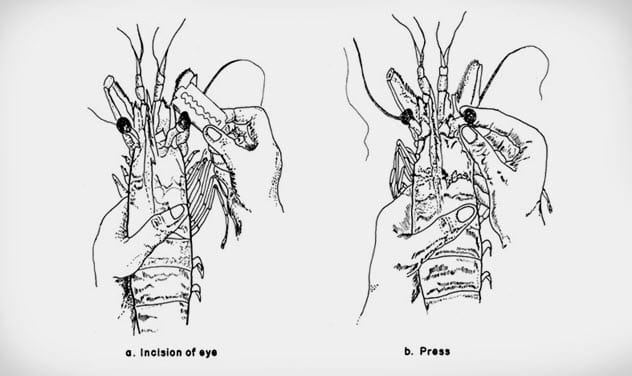
Female prawns only like to reproduce under the right conditions. They want everything to be perfect when they lay their eggs. But their tendency to only reproduce when they’re satisfied with their little prawn lives poses a huge problem for most farmers.
Prawns in farms are generally under more stress than in the wild, so their bodies prevent them from sexually maturing. However, farmers need the prawns to reproduce. One way to encourage them is to create conditions where female prawns feel safe enough to allow their ovaries to mature. Another method is cutting their eyes off. (Or just slicing them open.)
Female prawns have a gland in their eyestalks that control the maturation rate of their ovaries. If females won’t reproduce, then farmers simply have to remove this gland. Without it, the prawn’s ovaries begin to mature.
As the gland is in the prawn’s eyestalk, gland removal is generally done in one of two ways. Complete amputation of the eyestalk extracts the gland with it, and the prawn starts making babies.
But blinding a prawn is not necessary in the procedure known as eyestalk ablation. Farmers only need to slice the eye open and then squeeze the eyestalk to get rid of the gland. The eye will heal, but we don’t know how the prawn’s vision fares after having their eyes sliced in half. Science says it probably hurts, too.[10]
Mike lives on the East Coast and pays too much for beach parking.
Read some intriguing stories of animals that fought back against the humans who “done them wrong” on 10 Stories Of Animals That Fought Back Against Poachers and Top 10 Times Animals Held Grudges Against Humans And Took Revenge.








